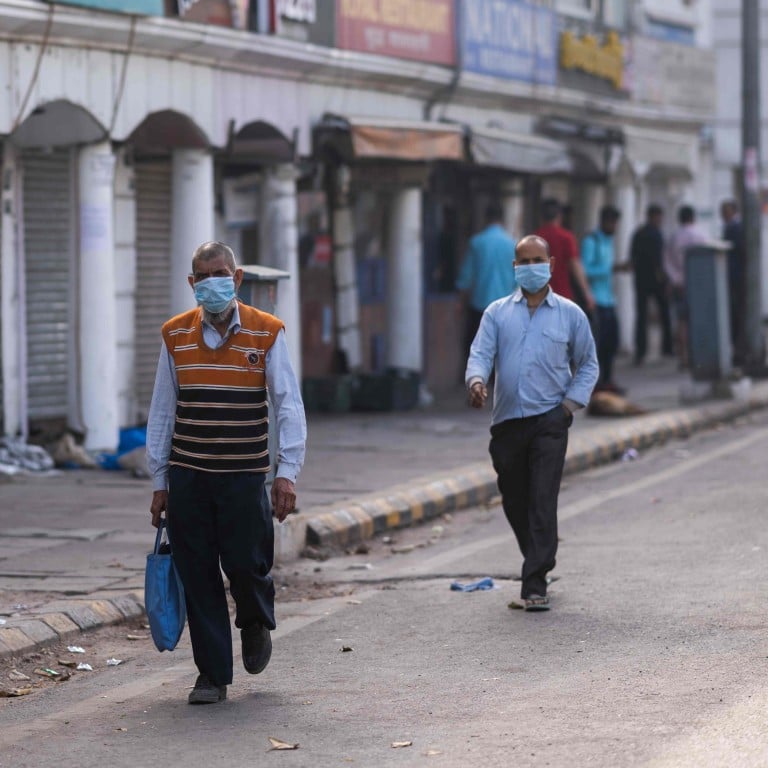
Coronavirus: India’s worst-case scenario is two in 10 people infected but most cases would be mild
- US-based expert Ramanan Laxminarayan originally said his model showed six in 10 of the population or 800 million people could get the Covid-19 illness but revised his projections in light of new measures being taken
- The actual outcome depends on whether India’s transmission pattern will be similar to the grim situation in Italy and Iran
Dr Ramanan Laxminarayan, director of the US-based Centre for Disease Dynamics, Economics and Policy, said he had revised his worst-case scenario figures to a 20 per cent infection rate or 300 million patients. He maintained the overwhelming majority of these infections would be “extremely mild”.
“This modelling is based on how transmissible the virus would be in India. If it’s as transmissible as in Italy and Iran, we’re looking at the 60 per cent mark. If it’s as transmissible as in some other countries, we’re looking at 20 per cent,” cautioned Laxminarayan, who said India is in no different a position than the US or the UK, where similar grim projections have been made.

But for India – where people live in jam-packed cities and commute in heavily crowded public transport with little to no understanding of social distancing – having 300 million people ill, with six to eight million requiring intensive medical treatment, would strain its healthcare system.
On Monday, millions of people were placed under lockdown in some 80 districts where confirmed Covid-19 cases were found.
This includes all the major cities such as Delhi, Mumbai, Bangalore, Hyderabad and Chennai. There, only essential services such as pharmacies and grocery shops will be allowed to operate. The railway network, India’s commuter lifeline which carries about 9 billion passengers annually, suspended all its passenger trains until the end of March.
Laxminarayan, an epidemiologist and economist by training who has advised the World Health Organisation and World Bank and teaches at Princeton University, said “community transmission” would have occurred in India at least three weeks ago and thousands of people have since been transmitting the virus unknowingly.
“It is almost impossible that this [community transmission] could not have happened simply because you’re talking about tens of thousands of people coming from the Gulf or other places. And to imagine that none of them carried the coronavirus and we managed to catch every single one of them at the border is just beyond the ability of any government,” he said.
Doctors slam India’s limited virus testing as fears of spread grow
Authorities are starting to notice worrying indications that these possible infections are resulting in deaths. “There are signs of it where people who are in the know are starting to see clusters of such cases,” said Laxminarayan, who is working closely with New Delhi and advising it on policy matters.
“You have 22,500 deaths happening in India every day and they’re all imperfectly measured. Let’s say we have 1,000 more additional deaths in the country because of Covid-19. Our systems are not sensitive enough to pick that up” said Laxminarayan.

“Five percentage variance is not going to be picked up. If you say 1,000 deaths across the country, it’s one additional death per district on average. It [the spike in death rate] will only show itself when that number becomes significantly high and we can work ourselves back,” he said.
India’s testing criteria remained severely restrictive until Saturday, March 21, but authorities are now slowly expanding testing to include individuals with respiratory disorders, in addition to those who show symptoms such as fever and cough and/or shortness of breath.
India could be next coronavirus hotspot with ‘avalanche’ of cases
Laxminarayan said the administration is rapidly ramping up its facilities to face the impending challenge, but there is only so much a government can do.
“It is called a black swan event for a reason which you cannot prepare for. It’s out of the blue and totally unexpected,” he said.
For example, the entire country’s ICU bed capacity is between 70,000 and 100,000 but if the outbreak hits the peak of its curve, those with severe infections could hit a few million within a short period.
“I think we need to prepare for the mitigation which is to make beds available at scale. We need hundreds of thousands of these,” said Laxminarayan, adding that extended periods of state-level lockdowns are also on the cards.
“This [the outbreak] is going to test three things about us: our health system capacity; our system of governance on how much people listen to what the government is saying; and our social fabric, whether people are going to help each other or it’s a free-for-all when everything breaks out.”
This story has been updated to reflect Laxminarayan’s latest comments on Monday evening.
Purchase the China AI Report 2020 brought to you by SCMP Research and enjoy a 20% discount (original price US$400). This 60-page all new intelligence report gives you first-hand insights and analysis into the latest industry developments and intelligence about China AI. Get exclusive access to our webinars for continuous learning, and interact with China AI executives in live Q&A. Offer valid until 31 March 2020.

